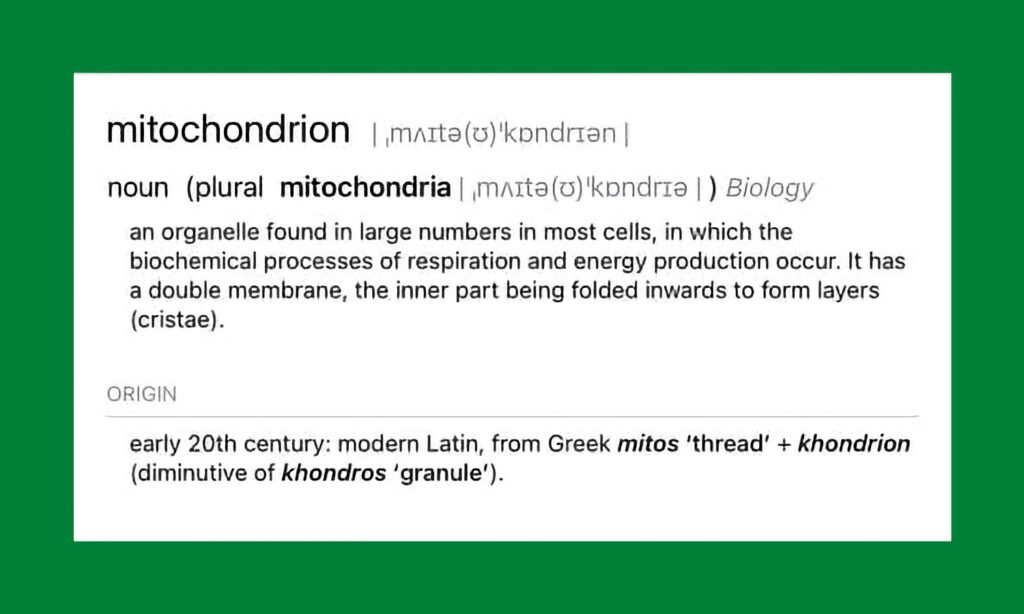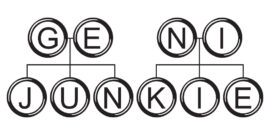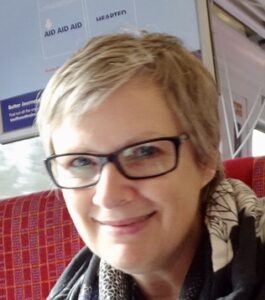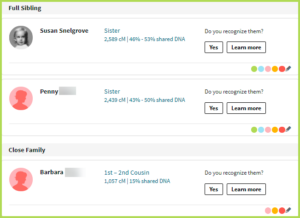Let’s talk about sex, shall we? And by that, I mean your 23rd Chromosome. The DNA test that everyone typically orders on-line is the Autosomal DNA test. But you may not know there are other special DNA tests you can order. These are the Y Chromosome and the Mitrochondrial DNA (“mtDNA”) tests. This Blog Post will discuss what these tests are, where you can get them, and how these special DNA tests might benefit your genealogy research.
Before we get into it though, I’ll say that these are specialized tests typically not for the novice researcher. They are something you would usually dig into after you have focused on building your family tree with your Autosomal DNA matches. But, it can definitely help in specific cases, like for male adoptees. Or you may just want to jump in because you are a genealogy nerd like me, and want to dig into your ancient ancestral roots.
But before we proceed, let’s start with the basics. It’s time for me to give you the sex talk! Please note that I am not a doctor or a scientist, so I am giving you the simplistic “Reader’s Digest” version of this information. If you are really interested, you can find other much more scientific explanations on-line, particularly at the International Society of Genetic Genealogy (IOSGG).
DNA and Your Chromosomes – Biology 101

It’s probably been a while since you graduated high school, but let’s think back to Biology 101 class. You’ll recall there are 23 pairs of chromosomes which carry your genes and DNA. One set of 23 comes from your father, and the other set of 23 comes from your mother. When joined together, they make 23 pairs. They are the blueprint of your genetics that makes you, “You”.
So how did it come to be that you are a boy? Or, even better, a girl?! (kidding, guys!) The 23rd chromosome pair determines your sex. This is what the reference means in the company name 23andMe.
The female chromosome is an “X”, and the male chromosome is a “Y”. A man is always “XY” and a woman is always “XX”. When making a baby, half the chromosomes come from mom and the other half from dad. In mom’s case, for Chromosome 23, the child’s sex, she’ll contribute one of her two X’s. In dad’s case, he’ll contribute either his X or his Y.

The sex of the child then just comes down to pure luck, and the odds are 50/50:
Mom X + Dad X = XX = a beautiful baby girl
Mom X + Dad Y = XY = a beautiful baby boy
Let’s call our baby boy, “Junior”, surname Patel. We know that Junior Patel is a boy, because he has a Y chromosome. And we know that Junior got his Y from Daddy Patel. So where did Daddy get his Y from? He got his Y from Grampa Patel. And Grampa got his Y from Great Granddad Patel. Makes sense, right? Women don’t have “Y”s, they only have “X”’s. So a man’s Y chromosome ALWAYS comes from his father, which came from his father, which came from his father.
The Y chromosome, therefore, is passed more or less unaltered from father to son repeatedly throughout the generations of a man’s family tree, forevermore.
Special DNA Test #1 – Y Chromosome
And this is where the Y DNA test comes in! The test looks specifically at the Y chromosome and then compares it to all the other Y tests in the company’s database. If they find a match, it means that these two men have a common male ancestor. And “whY” can’t women take this test? Because they only have X’s! That was a test to see if you have been paying attention! Good job.
So how can this be of benefit to you, mister? The Y test is used to trace the male line of a tree, which would also theoretically be a surname search.
In my baby Junior Patel example above, we’re tracing the male line of the Patel family. If Daddy Patel decided to get a Y chromosome test done, we’d expect any matches he gets would also have the last name Patel. The common ancestor for the other man (or men) he matches to in the Y DNA database could be from 3 generations ago, or it could be 20 generations ago… Or even more!
Why do my Y DNA Test Matches have a Different Surname?
So that’s the theory on surnames. You’ll likely find, however, many variations of surname spellings. In a real life example, I belong to a Facebook Group for my McGuirk family. Of course only male McGuirks can test, but I am certainly interested on the findings to help my family research. The Y testers in this Group have the surnames McGurk, McGuirk, McGirt, McGuyrt, and McGronk, leading back (they think) to the ancient name of Mag Oirc.
Some men who are a Y match might have a different surname altogether. Sometimes people have reason to change their name, like when they emigrate for instance. Names can be anglicized, shortened or changed altogether when they arrived in their new country. The common ancestor might also be many many generations back, giving many opportunities for the surname to change for some reason.
Remember also that someone’s family surname isn’t necessarily their biological one. Someone might be an adoptee, or descend from one (or more) illegitimate male children somewhere in their very long past.
Look at Jon Snow for instance. If he had gotten his Y DNA test done, he wouldn’t find a Snow or Stark among them. He would match to the Targaryens, and would have known he was meant to rule the 7 Kingdoms. (If you don’t catch the Game of Thrones reference, I can’t help you!)
So the Y Chromosome test might be particularly helpful for male adoptees. If a match (or hopefully several) is found, there is a very good likelihood that the surname of the adoptee’s father will be determined. This obviously could be very helpful to the search to find a man’s birth father.
So What About the Ladies’ DNA?
The ladies reading this Blog might wonder if there are equal rights for women in DNA testing? Is there a special X chromosome DNA test? No, but some companies do also show you X DNA matches for your 23rd chromosome. You can see an example of this in the graphic below related to my brother’s chromosome map. Since we’re talking about Special DNA tests in this Blog post though, we’ll save that larger X DNA topic for a future Blog.
The good news is there is a way to trace the matrilineal line, and that is through a Mitrochondrial DNA (“mtDNA”) test.

Special DNA Test #2 – mtDNA (Mitochondrial DNA)
If you’ll recall, the standard type of DNA test is called the “Autosomal” test, which is looking at your chromosomes. But thinking back again to Biology 101, at the cellular level we also have something called mitochondria (singular mitochondrion). Within the mitochondria is contained multiple copies of our mitochondrial DNA. This is passed by a mother to her children of either sex. Men receive their mother’s mtDNA, but they don’t pass the mtDNA on to their own children.
The “mtDNA” test therefore can be done by both men and women, and traces their matrilineal line. The mtDNA doesn’t mutate very often, so the testing can show your maternal connections back hundreds or even thousands of years. People who have similar mtDNA are assigned to particular “Haplogroups” that have been identified through human archaeological studies. People in these Haplogroups share a common matrilineal ancestor. Think of her as your “Eve”.
My Brother and I Take the Special DNA Tests
There are only a few companies that I am aware of that currently provide these special DNA tests: FamilyTreeDNA, 23andMe, CriGenetics and Living DNA.
My brother and I did these two special DNA tests in 2017 using FamilyTreeDNA. He got the Y DNA, and I got the mtDNA. FamilyTreeDNA is reported to have the largest client base, and most comprehensive Y testing, so giving us the greatest chance of matching.
My mtDNA Test Results

I have to be honest and say I was very disappointed. The tests were quite expensive, and I didn’t get many mtDNA matches. I currently have no close matches at all, and only 18 matches that are distantly related. In 2017, I had 12 matches, in 2018 I got 3 more, and in each of 2019 through 2021, I got only 1 more person match added each year. This isn’t exactly the treasure trove of matrilineal information I was hoping for!
About my ancient origins, I learned I was in Haplogroup K1b1a1d. I did receive a cool animated video with the results… I have a common maternal ancestor with Otzi the Iceman, “Europe’s oldest naturally occurring mummy”, found in the Tyrolean Alps in Northern Italy. He was born about 5,000 years ago. Very interesting, but I am not sure how to put Otzi in my family tree!
Even with the 18 matches I did get, I found that most of them hadn’t built a tree on the FamilyTreeDNA site. So I couldn’t tell much about how we might connect. It involved writing emails to my matches to try to find out. Sadly, only one person answered. But, in genealogy it only takes one person to make a difference, if it’s the right person.
My match and I have had some introductory exchanges. There are some nuggets of intriguing information about her family and mine back in England that we will be exploring together. Because it’s mtDNA, at least we both know we are looking for a connection with our mother’s mother’s, mother’s, mother, (and so on).
My Bro’s Y DNA Test Results
Once again, after spending a lot of money, my brother’s Y test got zero matches. Bah! And he won’t, until such time as another male Snelgrove takes the test with FamilyTreeDNA. But this scarcity of matching happened to be the case for us, and the risk one takes when getting this test.

If you are lucky enough, however, to have several Y matches, this information could be very significant for your research. If you look at my McGurk/McGuirk Facebook clan, they found several people who had tested. They are also using the Facebook Page to actively find and solicit other McGu(i)rks to take the test too. That’s pretty clever I think!
As to his (and therefore my) ancient ancestors, we did find out that my brother is in Haplogroup R-M269. Huh? Apparently it is the most common haplogroup for western European men, with increasing concentration as one moves from east to west. Reportedly, 94% of the men in Ireland below to this Haplogroup.
You May Need your PhD!
Note that for both the Y DNA and the mtDNA tests, I found the reporting very difficult to understand. And I’m a Geni Junkie! It is super scientific, and they don’t make it particularly easy. So this testing is definitely not for the novice.
But if you are interested in getting into your specific ancestral origins, and can understand a befuddling amount of detailed science at a molecular level, then you will enjoy researching your Haplogroup. Just a quick google search of ours came away with a mind numbing amount of information! But it is pretty fascinating how much research is ongoing, especially in the area of medicine and inherited diseases. I even found Facebook has Group Pages for your own Haplogroup, if you want to join and compare your DNA results!
An Adoptee Update
While my brother didn’t have any luck in matching, after I wrote this Blog post I had another experience which was much more positive. So, I’d like to update my findings for your information.
I have a common DNA match named Jon in California, and I have been helping him to find his birth father. Jon is Vietnamese, and his father was an American pilot. All he has is a picture, with the name “Wayne” written on it. We did get quite a very long way in our search, pointing to one specific family, with 3 sons or 1 daughter being the potential parent of Jon’s birth father Wayne.
To go further, I had suggested to Jon that he try the Y test. He did it with FamilyTree DNA, and got much more satisfying results. He did the 67 marker test, and got 32 matches! More than half of them came up with the surname Harper. Other variations were Harpur and Harter. So this is a great demonstration of what I said above on how the surname can morph.
He also had several small groupings of other seemingly unrelated names like Miller, and some Scandinavian names. Interesting! This has helped us a lot because it points us in a direction of which name to search for. It also confirmed that with the family we were looking at, the parent must be the girl and not one of the boys, because the surname is different. This is a vital clue.
These tests are pretty expensive, and they do give you options for three different levels of markers. What I learned from Jon’s experience is that it was better to have more markers to compare. Jon had lots of matches with the 12 markers, and that would have made it more difficult to figure out which name we should be focusing on. He went with the middle of the road one at 67 markers. FamilyTreeDNA do offer upgrades, so maybe trying a medium priced test first and upgrading later could be an option for you.
In my brother’s case, he got zero matches at even the lowest level. I would have been upset had I gone for the largest test, and would feel it was a huge waste of money! So again, you run a risk of it being feast or famine, so keep that in mind when you choose to proceed.
Jon’s experience versus my bro’s test was a great lesson that the Y test CAN help people. It all depends on whether or not other people with the surname you are seeking take the test. Maybe we’ll get lucky and a Snelgrove will do the Y test and match my brother some day. Based on Jon’s findings, I came away feeling much more positive about doing the Y test. It can certainly be vitally helpful, especially for those seeking an unknown father.
Uploading our Autosomal DNA Tests to FamilyTreeDNA
After we did the special DNA tests, I figured it wouldn’t hurt to also upload Autosomal DNA files from Ancestry to FamilyTreeDNA. It was free, and I also got access to our DNA matches with their users. That was great, because this gave us access to more DNA matches.
It’s time for some brutal honesty. In my personal opinion, I found FamilyTree DNA’s software to be poor and not user friendly. It is very difficult to move around the trees and to read dates and places for the people in the viewing screen. Going backwards kicks you out to your own tree. Totally frustrating!

Plus, unlike most other sites, there are no records data sets for you to search in order to build your tree. It is merely a basic tree building platform.
I’m guessing these two reasons are probably why I found that most people don’t seem to build their trees on FamilyTreeDNA. When you examine a DNA “cousin” match, you often have to write to that person to ask how you might be related. You can’t just look at their tree to see if it’s worth exploring. I find it takes too much work and usually is unproductive, because people don’t answer. You could upload your Gedcom file I suppose, but mine is too large, so would confuse my matching. I manually uploaded a few generations of my tree instead.
Because of these reasons, quite frankly, I would never recommend FamilyTreeDNA for an Autosomal DNA test alone. I feel my time is much better spent researching my DNA matches and building a great tree at the other sites I use.
To be perfectly fair though, FamilyTreeDNA has a great feature that I do love, and that is the Chromosome Browser (pictured left). MyHeritage and Gedmatch are the only other sites I have used so far that provide this tool. This graphic shows the comparison between my brother and I. As expected, you can see that we share about 50% of our DNA. I’m not sure which came from my mother and which from my father, but by using the DNA Painter tool, I’ll be able to figure it out. I’ll be writing a future Blog Post about this great free tool, as it takes your DNA research to the next level.
Finally, there is another good feature for the FamilyTree DNA site that I like, and that is research groups of people studying the same surnames, and other DNA related projects. So, this can be very useful too for my research.
To summarize, therefore, in my opinion the main thing that FamilyTreeDNA has going for it is the special DNA testing niche that isn’t done at many other companies yet. Based on my experience, I would use FamilyTreeDNA just for that, rather than Autosomal DNA testing. Then if you want the ability to have more DNA “cousin” matches, you can upload your DNA file from another site, just like I did. If you’d like information on exactly how you go about that, you can read my Blog Post “How to Download and Transfer your DNA File”.
If you do a special test, you may get lucky like my friend Jon and get lots of matches, or get zero matches like my brother on the Y tests. I myself got a few matches on my mtDNA test. So whether or not you get matches with these special tests is a bit of a crap shoot. But if you do, they can be vitally important to your research. They do have sales from time to time, so maybe wait for that, and give it a go. If you do, I would certainly recommend you go with FamilyTree DNA.
If you’d like to circle back to read about the typical Autosomal DNA Tests, you can go to my Blog Post “Choosing a DNA Testing Company”.
Your Geni Junkie friend,
Susan







